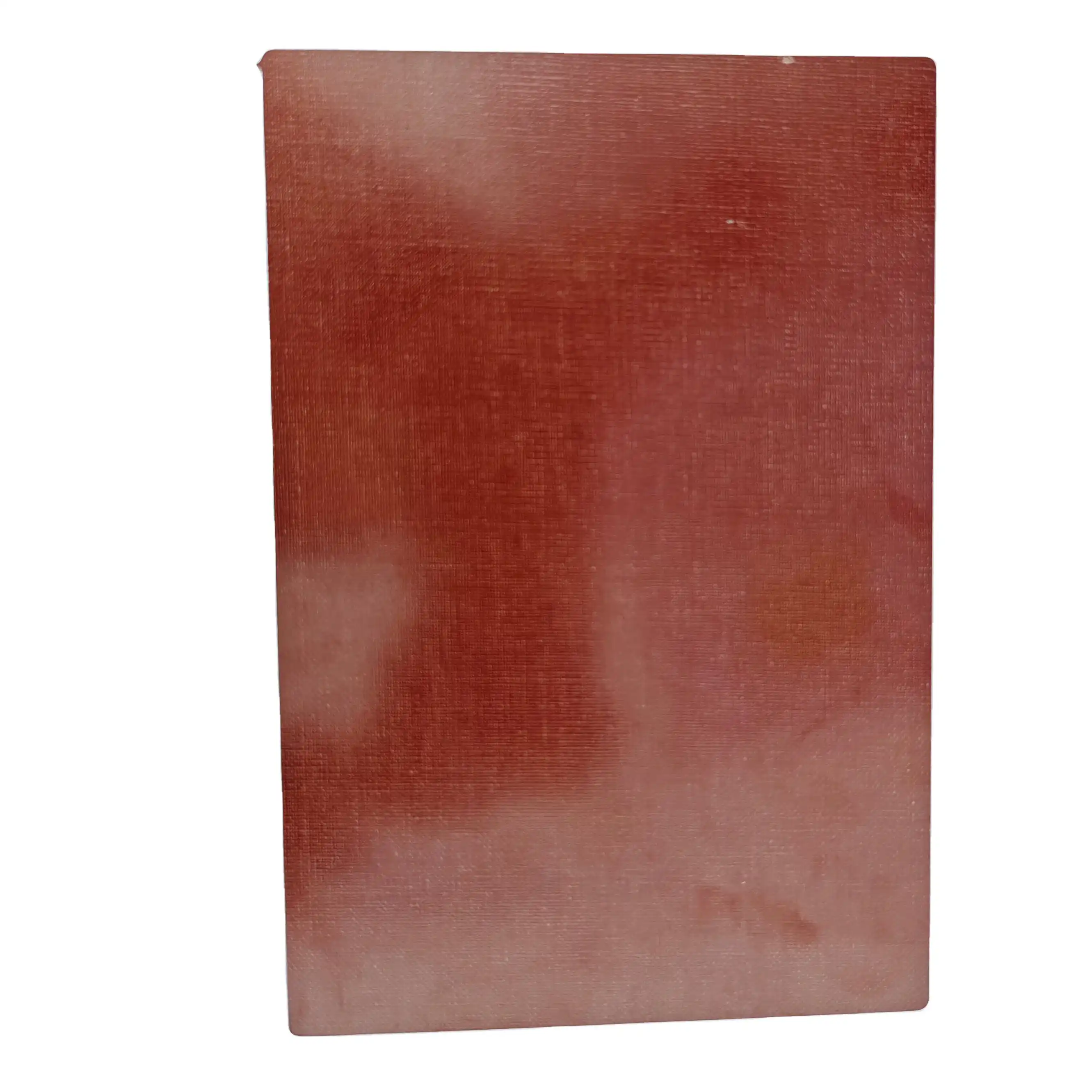Unparalleled Thermal Properties of CE Phenolic Sheet
Heat Resistance and Thermal Stability
CE phenolic sheet exhibits remarkable heat resistance, capable of withstanding temperatures up to 200°C (392°F) continuously and even higher for short periods. This exceptional thermal stability stems from the crosslinked structure of the phenolic resin, which forms a robust, three-dimensional network. The material's ability to maintain its mechanical properties at elevated temperatures sets it apart from many other polymers, making it indispensable in high-temperature applications.
Low Thermal Conductivity
One of the key advantages of CE phenolic sheet is its low thermal conductivity. This property allows the material to act as an effective thermal insulator, preventing heat transfer across its surface. The low thermal conductivity of CE phenolic sheet contributes to energy efficiency in various applications, reducing heat loss and improving overall system performance. This characteristic is particularly valuable in industries where thermal management is crucial, such as in the production of heat shields or insulation for industrial ovens.
Dimensional Stability at High Temperatures
CE phenolic sheet maintains excellent dimensional stability even when exposed to high temperatures. Unlike many other materials that may warp, expand, or contract significantly under thermal stress, CE phenolic sheet retains its shape and dimensions. This stability is critical in applications where precision and consistent performance are paramount, such as in the manufacturing of high-temperature gaskets, seals, or structural components for aerospace applications.
Mechanical and Chemical Resilience in Extreme Conditions
High Strength-to-Weight Ratio
CE phenolic sheet boasts an impressive strength-to-weight ratio, making it an excellent choice for applications where both strength and light weight are essential. This property is particularly advantageous in aerospace and automotive industries, where reducing weight without compromising structural integrity is a constant challenge. The material's ability to maintain its strength at high temperatures further enhances its value in these sectors, allowing for the design of components that can withstand the rigors of high-temperature environments while minimizing overall weight.
Chemical Resistance
In addition to its thermal properties, CE phenolic sheet demonstrates remarkable resistance to a wide range of chemicals. This resilience makes it suitable for use in corrosive environments or applications involving exposure to aggressive substances. The material's chemical inertness ensures that it maintains its structural integrity and performance characteristics even when in contact with acids, bases, or organic solvents. This property expands the potential applications of CE phenolic sheet to include chemical processing equipment, laboratory fixtures, and components for the oil and gas industry.
Wear and Abrasion Resistance
CE phenolic sheet exhibits excellent wear and abrasion resistance, particularly at elevated temperatures. This property is crucial in applications where components are subjected to friction or mechanical stress under high-temperature conditions. The material's ability to withstand wear ensures longevity and reliability in demanding environments, such as in bearings, bushings, or sliding components used in high-temperature machinery. The combination of thermal stability and wear resistance makes CE phenolic sheet an ideal choice for applications that require both heat resistance and mechanical durability.
Electrical and Flame-Retardant Properties for Safety-Critical Applications
Superior Electrical Insulation
CE phenolic sheet possesses outstanding electrical insulation properties, maintaining its dielectric strength even at high temperatures. This characteristic makes it an excellent choice for electrical components and insulation in high-temperature environments. The material's ability to prevent electrical current flow while withstanding thermal stress is crucial in applications such as switchgear, circuit boards, and electrical enclosures for industrial equipment operating at elevated temperatures. The combination of thermal stability and electrical insulation properties ensures reliable performance in safety-critical electrical systems exposed to harsh conditions.
Flame-Retardant Characteristics
One of the most valuable properties of CE phenolic sheet is its inherent flame-retardant nature. The material exhibits low flammability and does not sustain combustion, making it ideal for applications where fire safety is paramount. When exposed to flame, CE phenolic sheet tends to char rather than melt or drip, creating a protective barrier that limits the spread of fire. This self-extinguishing property is particularly important in aerospace, automotive, and public transportation applications, where fire safety regulations are stringent. The flame-retardant characteristics of CE phenolic sheet contribute significantly to the overall safety of systems and structures in high-temperature environments.
Low Smoke and Toxicity Emissions
In addition to its flame-retardant properties, CE phenolic sheet produces minimal smoke and toxic emissions when exposed to high temperatures or fire. This characteristic is crucial in enclosed spaces or applications where the safety of personnel is a primary concern. The low smoke and toxicity emissions reduce the risk of visibility impairment and toxic inhalation during emergency situations, potentially saving lives and facilitating safer evacuations. This property makes CE phenolic sheet an excellent choice for interior components in aircraft, trains, and other transportation systems where passenger safety is paramount.
Conclusion
CE phenolic sheet's exceptional performance in high-temperature applications stems from its unique combination of thermal, mechanical, chemical, and safety properties. Its ability to withstand extreme heat while maintaining dimensional stability, strength, and electrical insulation makes it an invaluable material across various industries. The inherent flame-retardant characteristics and low emissions further enhance its suitability for safety-critical applications. As industries continue to push the boundaries of performance and safety, CE phenolic sheet remains at the forefront, offering reliable solutions for the most demanding high-temperature environments.
Contact Us
Are you looking for a high-performance material for your high-temperature application? Discover the advantages of CE phenolic sheet for your specific needs. Contact our team of experts today at info@jhd-material.com to learn more about how our CE phenolic sheet solutions can elevate your project's performance and safety standards.






